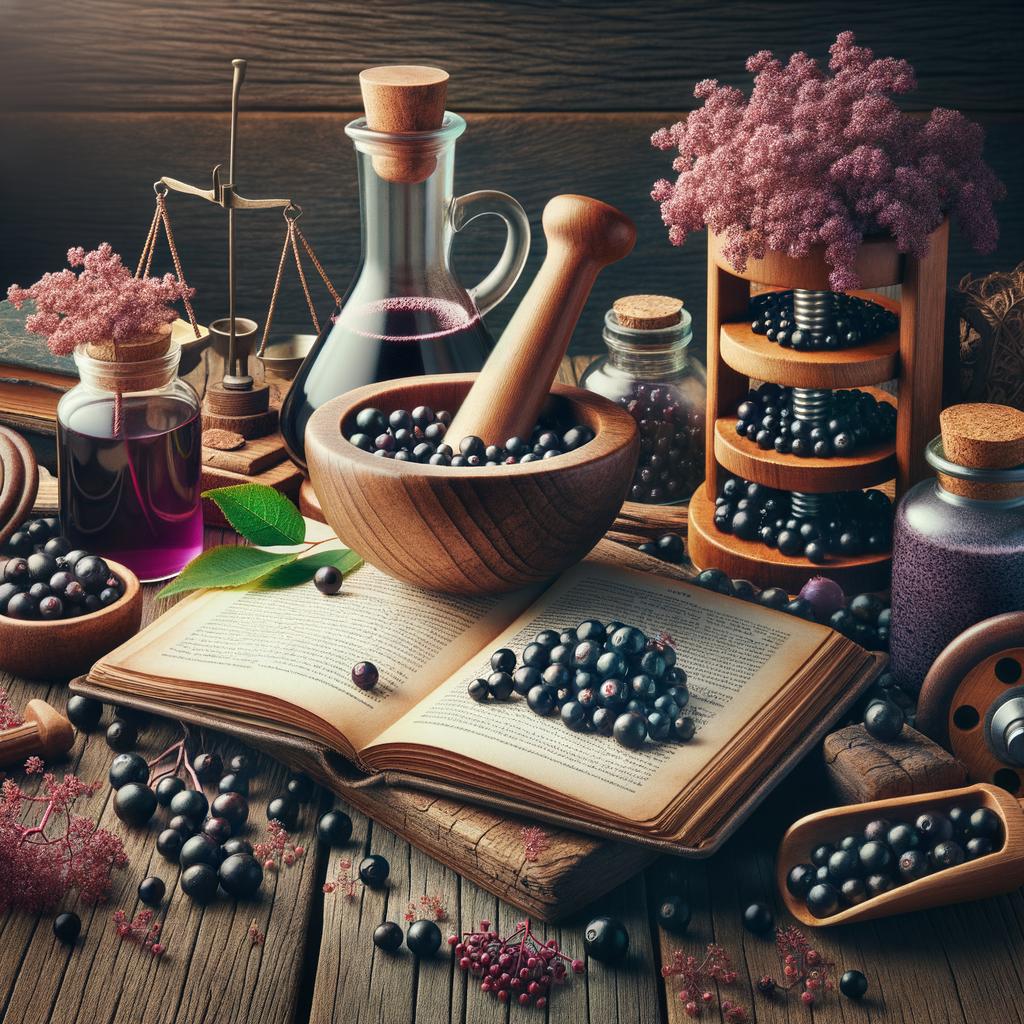The Art and Antiquity of Crafting Elderberry Wine
Have you found yourself contemplating how to make your own elderberry wine? Fear not, as this enchanting endeavor is as simple as the joy it brings! Elderberry wine is a delectable homecrafted brew with a grand tradition, spreading cheer since the times of our forebears. This article seeks to demystify the process of creating elderberry wine and provide you with a roadmap to make your own rich, full-bodied beverage.
The key to success in making elderberry wine lies within the amalgamation of basic home brewing knowledge, a well-rounded grasp of the intricacies of the elderberry, and a pinch of patience. Expect to delve deep into the path from berry to bottle.
The Alluring Elderberry
Elderberries have long been utilized for their great versatility. Not only are they teeming with antioxidants and vitamins, but their ripe, rich flavors translate marvelously to wine. The bold, tart taste, when brewed correctly, is transcendental, feeling like a secret sip of an old world recipe.
The Magic Potion: Elderberry Wine Recipe
Before embarking on our wine-making journey, it’s vital to have the right elements at hand. You’ll need elderberries, sugar, water, and yeast – the trusty four that form the backbone of your brew. These humble ingredients, when put through the time-tested process of fermentation, magically metamorphose into the divine elderberry wine.
Process of Wine-Making: An Overview
Now that we’ve set up our stage, let’s dance through the steps required to brew elderberry wine. First, we sanitize all equipment and prepare the elderberries by removing the stems and washing the fruits. Then it’s time to simmer, sugar, and cool our concoction before we sprinkle on our yeast and wait for the magic of fermentation to unfold.
It’s a case of waiting, bottling, and waiting some more. The wine, like a story, becomes richer with time, and your elderberry elixir will characterize itself more distinctly within a month or two.
Patience: The Seasoning of Time
Just like fine art or a hearty stew, great wine requires time and patience. The fermentation process is a slow dance that underpins the winemaking process. After setting your mixture to ferment, patience takes center stage and time brings the transformation to fruition. Every sip of wine you’ll enjoy can be seen metaphorically as a tick-tock of the clock encoded in its flavor.
Elderberry Wine: The Final Review
Elderberry wine, with its rich magenta hue laced with notes of tart and sweet, stands as a testament to time and tradition. As you sip your home-brewed creation, you’ll experience the culmination of a process that ancient civilizations enjoyed – our ancestors, passing down the wisdom of wine-making from generation to generation.
A Cautionary Note on Elderberries
Although elderberries pack a flavorful punch, it’s critical to remember that they contain traces of cyanide-producing compounds that can be harmful when consumed raw or in large quantities. Hence, cooking or fermenting these berries for your wine is an absolute must.
Conclusion: Raise Your Glasses to Elderberry
Casting ourselves back into the epoch of our ancestors, we realize that they too reveled in the pleasure of sipping a rich, homemade elderberry wine. A sip feels like a moment suspended in time, allowing us to share in an ancient tradition, an experience that is both personal and collective. Truly, crafting your own elderberry wine brings as much joy to the process as relishing the final product.
Step by Step Elderberry Wine Recipe
– Gather 5 pounds of elderberries
– Wash the elderberries and remove any stems
– Mash the berries using a potato masher
– Place the mashed berries in a large pot
– Add 3 pounds of sugar and 2 tablespoons of lemon juice to the pot
– Bring the mixture to a boil, then let it simmer for 30 minutes
– Remove from heat and let the mixture cool
– Once cooled, strain the liquid from the berries using a cheesecloth
– Transfer the liquid to a sterilized glass jar or container
– Add a packet of wine yeast to the liquid and stir
– Cover the jar with a cloth and let it sit for 2-3 days, stirring daily
– After 2-3 days, strain the liquid again and transfer it to a clean, sterilized container
– Let the wine ferment for 4-6 weeks
– Taste the wine and add more sugar if desired
– Bottle the wine and let it age for at least 6 months before drinking
– Enjoy your homemade elderberry wine!
Frequently Asked Questions
1. What are some health benefits of elderberry wine?
Elderberry wine contains nutrients and antioxidants which can boost your immune system. Remember, moderation is key!
2. Will homemade elderberry wine taste like the commercial version?
Homemade elderberry wine carries a personal touch and character unique to your method and the berries you use, hence, some differences in taste are to be expected.
3. How long does elderberry wine last?
Properly bottled and stored elderberry wine can last several years, with the flavors deepening over time.
4. Can I use frozen elderberries to make wine?
Yes, you can! Frozen elderberries can be a great substitute when fresh ones are out of season.
5. What yeast works best for elderberry wine?
Champagne or wine yeast tend to work well for elderberry wine due to their high alcohol tolerance and ability to retain robust flavors.


